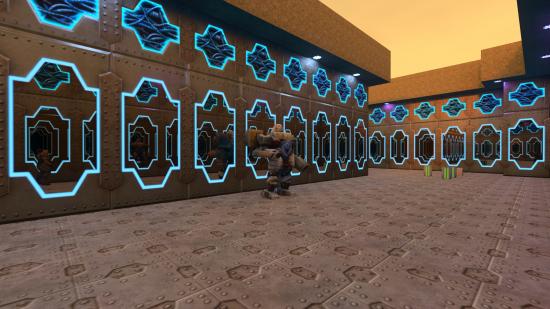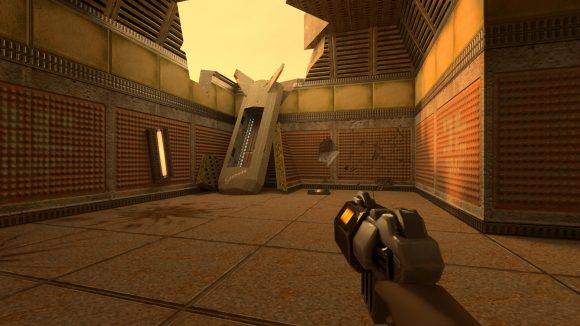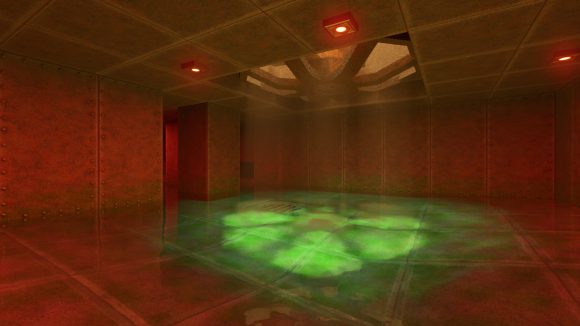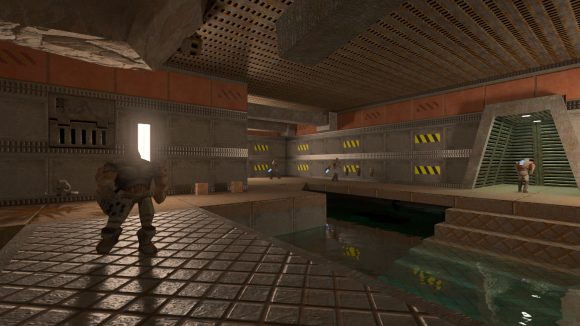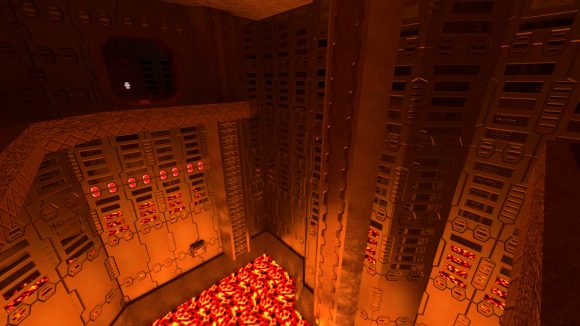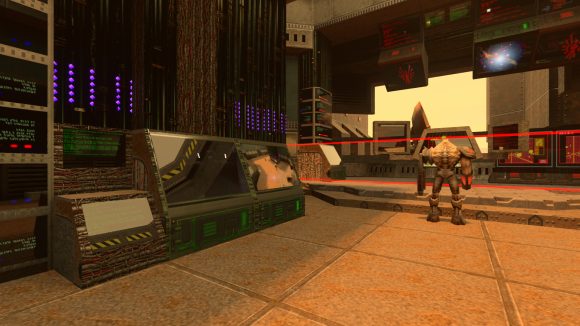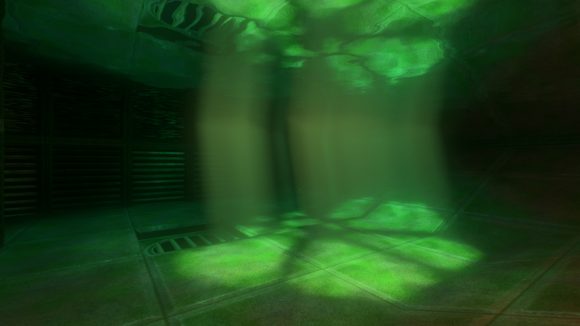Nvidia has released a free update for Quake II RTX that drastically improves over 400 textures, ray tracing, and performance. The remastered classic was released by Nvidia for free in June following a ray-traced facelift courtesy of Nvidia’s Lightspeed – its dedicated RTX studio. The team behind the update has now issued another, version 1.2, which once again significantly changes the game’s graphics and tone.
The update incorporates new ray-traced techniques, such as reflections within reflections within reflections, and adds refraction and god rays through glass. Water has also undergone a revamp, and users will now experience god rays shimmering through the depths. Along with specific ray-traced effects, Nvidia has added in overall rendering and denoising improvements that span the entire game.
Dynamic resolution scaling has been added into the options menu, too. So if you’re struggling to hit 60fps at all times, switch this setting on to allow the game to adjust your resolution to maintain pace. Similarly, there are new reflection and refraction depth settings to limit the number of bounces for the aforementioned feature. The number of bounces directly correlates to game performance, so make sure to check this setting if you’re experiencing choppy gameplay.
Also included in Quake II RTX is the ability to mod the game, which should open up Nvidia’s reimagined ray-traced world to the sizeable Quake modding community.
The full list of changes coming with 1.2 is available on the Steam Quake II RTX page.
The Quake II RTX 1.2 update will automatically install for users via the Steam client. Or, if you’re running a standalone version, you can instead download the update via Nvidia’s provided link here.
Quake II RTX utilises path tracing, a ray tracing implementation also utilised in Minecraft – potentially the most stunning use of ray tracing so far. Both games do, however, require Nvidia RTX graphics cards – some of the best graphics cards going – in order to operate smoothly, especially at high resolution/frame rates.
